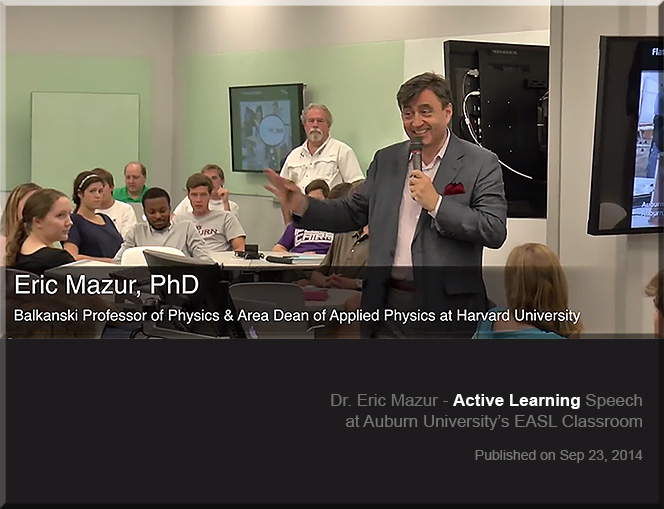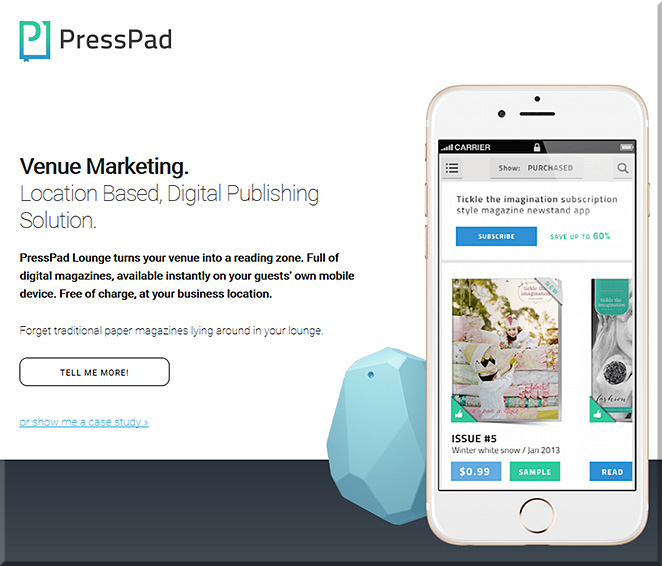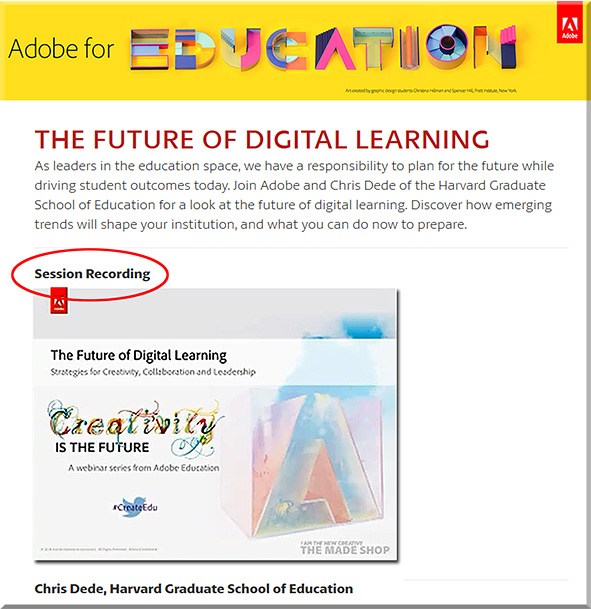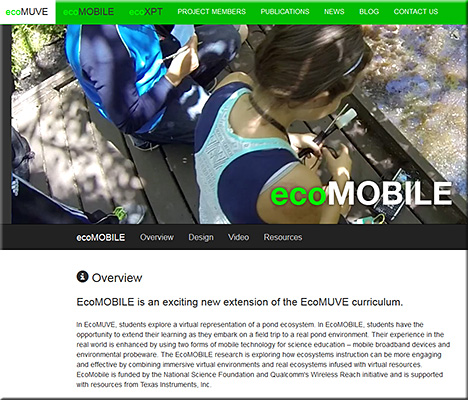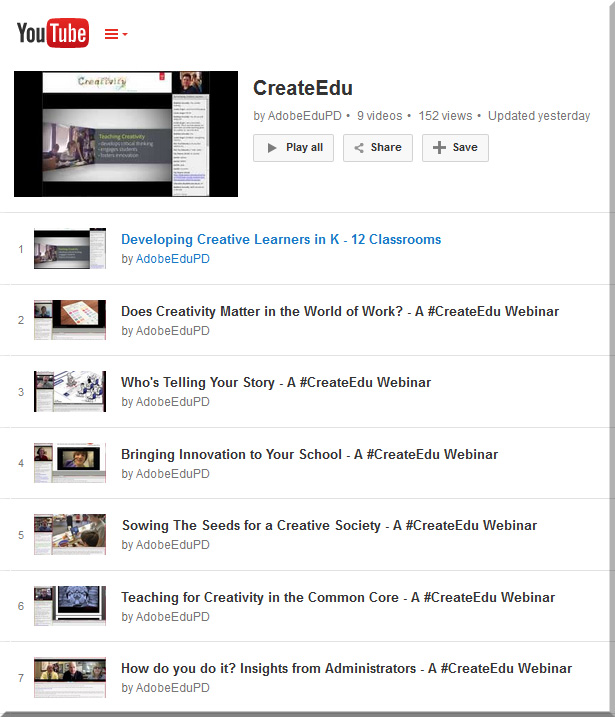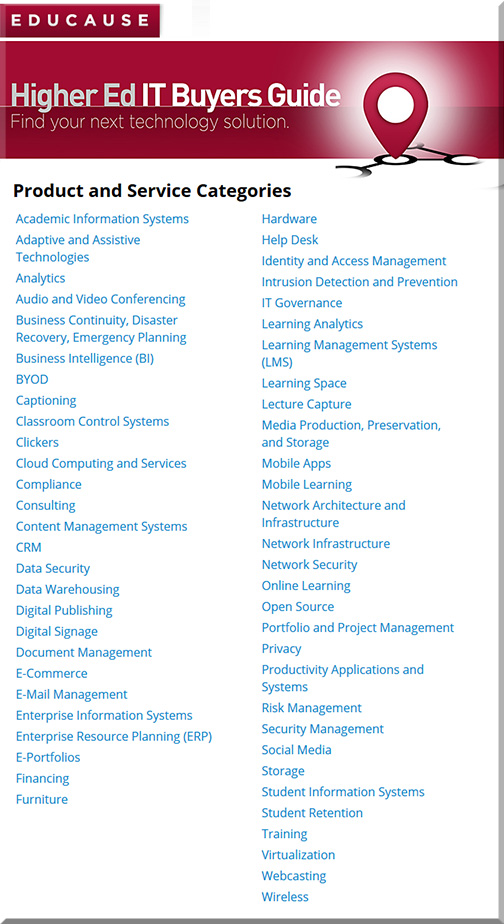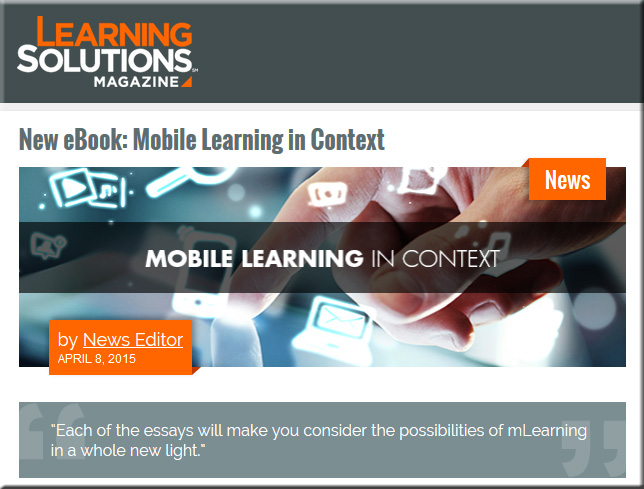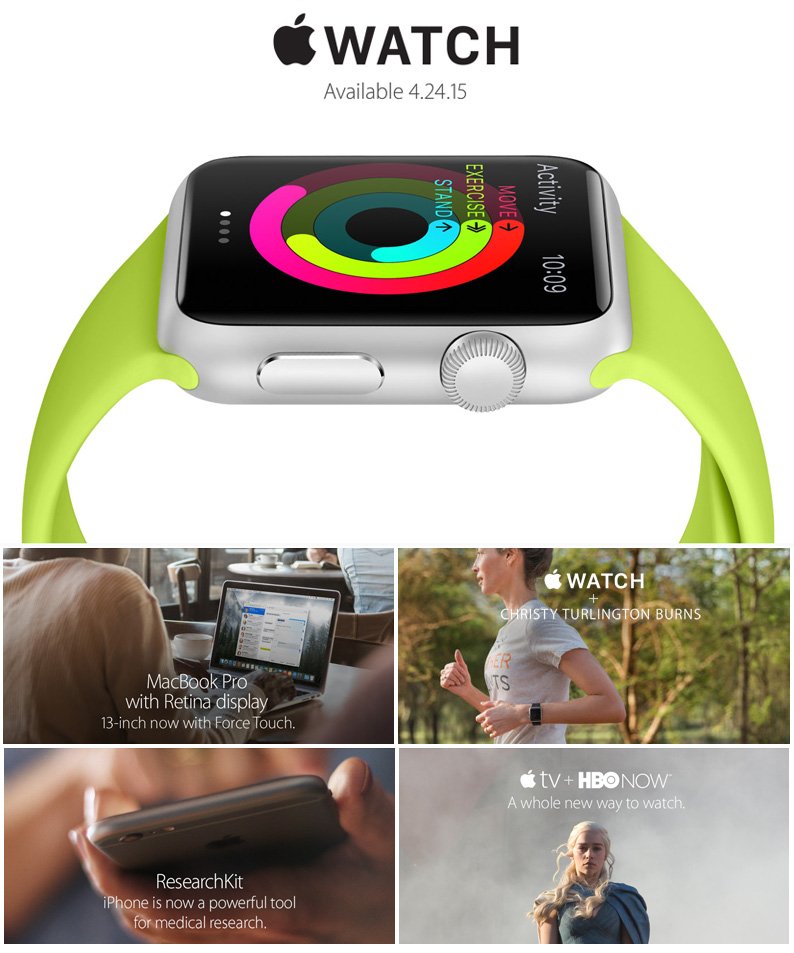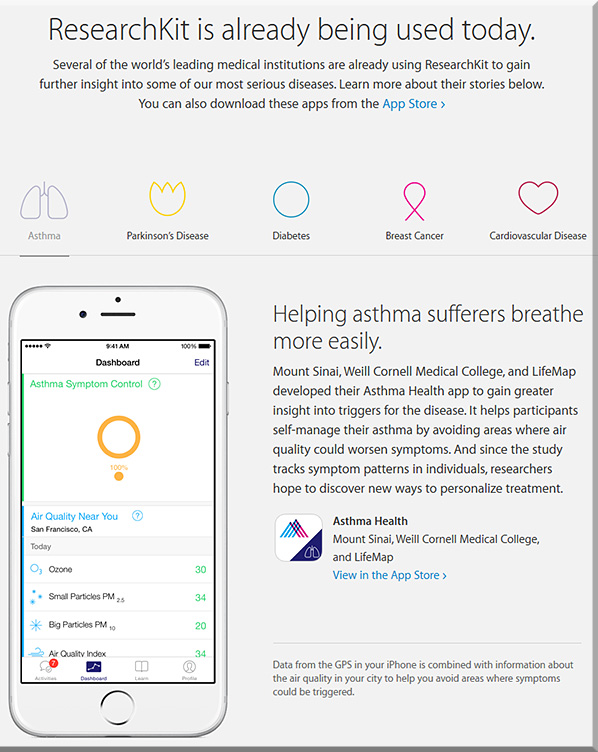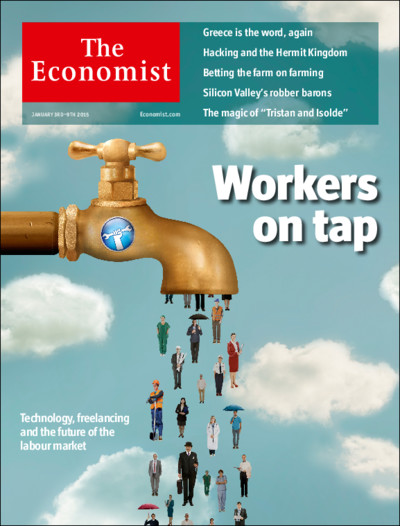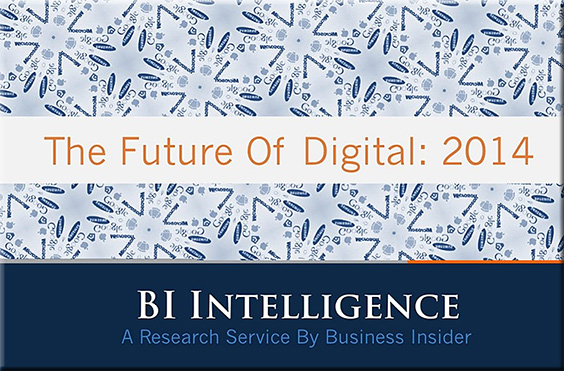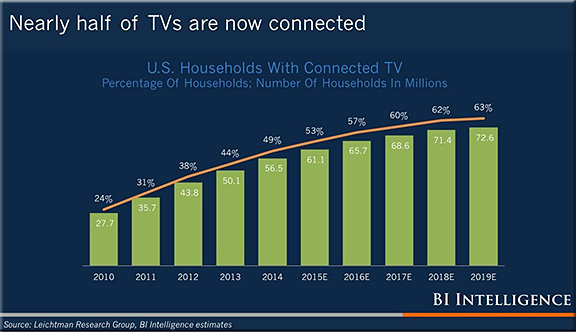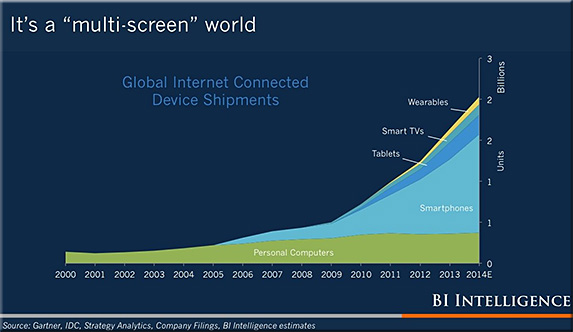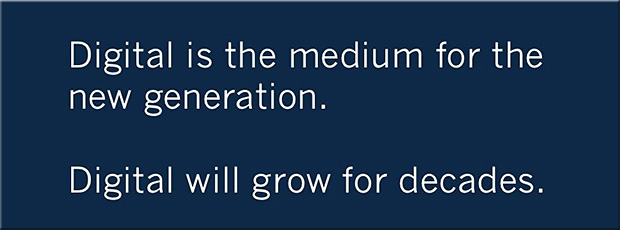From DSC:
What applications and implications might this type of setup mean for libraries? For classrooms?
PressPad Lounge: new digital press corner that utilizes iBeacon technology — from talkingnewmedia.com by D.B. Hebbard
Excerpt:
The idea behind PressPad Lounge is that the service allows a business to turn a space into a reading zone, allowing those with mobile devices to access digital publications for free.
Excerpt:
With PressPad Lounge, people visiting your venue are able to install the magazine app of their choice, and read every issue for free while remaining PHYSICALLY within your venue.
Whether it’s a hotel lobby, a shopping mall, restaurant or a booth, PressPad Lounge enables a slick marriage of digital publishing with location marketing. People located within the range of the reading zone will be able to read magazines on their mobile devices, for free.
From DSC:
Chris uses ecoMOBILE and ecoMUVE to highlight the powerful partnerships that can exist between tools and teachers — to the benefits of the students, who can enjoy personalized learning that they can interact with. Pedagogical approaches such as active learning are discussed and methods of implementing active learning are touched upon.
Chris pointed out the National Research Council’s book from 2012 entitled, “Education for Life and Work: Developing Transferable Knowledge & Skills in the 21st Century” as he spoke about the need for all of us to be engaged in lifelong learning (Chris uses the term “life-wide” learning).
Also, as Chris mentioned, we often teach as we were taught…so we need communities that are able to UNlearn as well as to learn.
Also see:
7 powerful reminders to finally adopt HTML5 in corporate eLearning — from elearningindustry.com by Alfredo Leone
Excerpt:
Mobility, ubiquity and portability are key requirements for any type of learning as the market fully embraces to the demand of learners to access knowledge when and where is needed. Learners today expect access to relevant and useful information on various types of mobile devices connected via networks of ever cheaper and faster bandwidth.
This trend toward multi-device and multi-access learning is solidifying day after day, making responsive content design one of the most critical components of any production process for online training material. The premise today is for learning to “follow” the person and not the other way around.
In this dynamic online learning scenario, HTML5 is finally going mainstream as the leading technology to structure and present learning content online. Here are some powerful reasons to adopt HTML5 today even when legacy constrains seem to favor a “wait and see” approach:
———–
Also see:
2015 Business eLearning Trends Infographic — from elearninginfographics.com
Addendum on 4/28/15:
How soon is now for the mobile web? — from visionmobile.com by Matt Asay
Excerpt:
That’s one primary takeaway from VisionMobile’s “How Can HTML5 Compete With Native?” report. As report author Dimitris Michalakos concludes, “The question is no longer *whether* HTML5 can produce quality apps, but *how* easy it is to create quality web apps.” Given that “HTML5 is like driving a car without a dashboard,” the key is to deliver better dashboards, or tools, to make it easier to build great web apps.
New from Educause:
Higher Ed IT Buyers Guide
Excerpt:
Quickly search 50+ product and service categories, access thousands of IT solutions specific to the higher ed community, and send multiple RFPs—all in one place. This new Buyers Guide provides a central, go-to online resource for supporting your key purchasing decisions as they relate to your campus’s strategic IT initiatives.
Find the Right Vendors for Higher Education’s Top Strategic Technologies
Three of the Top 10 Strategic Technologies identified by the higher education community this year are mobile computing, business intelligence, and business performance analytics.* The new Buyers Guide connects you to many of the IT vendors your campus can partner with in the following categories related to these leading technologies, as well as many more.
New eBook: Mobile Learning in Context — from learningsolutionsmag.com, Janet Clarey, & others; with thanks to Mayra Aixa Villar for this item
Excerpt:
Mobile learning is here to stay: Why be tied to a computer when you can spend the day where you want and learn at the same time? But mLearning isn’t just eLearning on a smaller screen. It has specific demands and offers unique opportunities. Are you making the most of your mLearning? The eLearning Guild’s free eBook, Mobile Learning in Context, might inspire you to rethink your approach.
Rethink your approach
For Mobile Learning in Context, contributing editor Janet Clarey assembled a group of mobile learning thought leaders and asked for their take on the range of mLearning topics. Each of the essays will make you consider the possibilities of mobile learning in a whole new light. Among the eBook’s highlights:
Watch out for these trends in mobile learning: 2015 and beyond — from blog.originlearning.com
Excerpt:
- Global mobile data traffic grew 69 percent in 2014 and was nearly 30 times the size of the entire global Internet in 2000
- Mobile video traffic exceeded 50 percent of total mobile data traffic for the first time in 2012
- Mobile network (cellular) connection speeds grew 20 percent in 2014
- In 2014, on an average, a smart device generated 22 times more traffic than a non-smart device.
These are just some excerpts from Cisco’s Visual Networking Index: Global Mobile Data Traffic Forecast Update for 2014 to 2019, but they clearly prove a point. That, the usage of mobiles is growing faster than ever before, backed by the rolling out of quicker internet speeds and smarter phones at affordable prices.
- The research has also made important forecasts for the next 5 years, such as:
- The number of mobile-connected devices exceeded the world’s population in 2014.
- 4G traffic will be more than half of the total mobile traffic by 2017.
- Because of increased usage on smartphones, smartphones will reach three-quarters of mobile data traffic by 2019.
Now against the backdrop of such information, it is interesting to explore what role mobiles are playing in shaping up the workplace learning scenario. These trends with mobile learning are evidence to the fact that we are on the brink of a new era of learning – through the mobile device.
Learning in a Multi-device World (Infographic) — from upsidelearning.com by Pranjalee Thanekar; with thanks to Mayra Aixa Villar for this item
Excerpt:
According to the Verto Analytics’ Device Ecosystem US 2014 report, the average number of smartphones, tablets and computers used by an average US adult is 2.8 devices. Further, consumers show an increasingly polarised preference towards a particular device and platform as technology evolves. This indicates the increasing dependency on devices, generated by the ease in switching between tasks and the leverage it provides.
Also see:
- Spring Forward Event — from apple.com
- See the Apple Watch in action (in six GIFs) — from fortune.com by Jason Cipriani
- Everything you need to know about Apple’s Watch Event — from yahoo.com by Dan Tynan
- Apple failed to explain why we need a smartwatch, but it did give us a hint — from businessinsider.com by Steve Kovach
Technology predictions for the second half of the decade — from techcrunch.com by Lance Smith
Excerpts:
- Big Data and IoT evolve into automated information sharing
- Self-driving vehicles become mainstream
- The appearance of artificial intelligent assistants
- Real-time agility through data virtualization
EdTech trends for the coming years — from edtechreview.in
Excerpts:
EdTech is about to explode. The coming technology and the new trends on the rise can’t but forecast an extensive technology adoption in schools all around the globe.
Specific apps, systems, codable gadgets and the adaptation of general use elements to the school environment are engaging teachers and opening up the way to new pedagogical approaches. And while we are scratching the surface of some of them, others have just started to buzz persistently.
- Wearables + Nano/Micro Technology + the Internet of Things
- 3D + 4D printing
- Big Data + Data Mining
- Mobile Learning
- Coding
- Artificial Intelligence + Deep Learning
- Adaptative learning: based on a student’s behaviour and results, an intelligent assistant can predict and readapt the learning path to those necessities. Combined with biometrics and the ubiquitous persona (explained below) a student could have the best experience ever.
- Automatic courses on the fly, with contents collected by intelligent searching systems (data mining).
- Virtual tutors.
- The Ubiquitous Persona + Gamification + Social Media Learning
- Specialised Staff in Schools
Phones and wearables will spur tenfold growth in wireless data by 2019 — from recode.net
Excerpts:
Persistent growth in the use of smartphones, plus the adoption of wireless wearable devices, will cause the total amount of global wireless data traffic to rise by 10 times its current levels by 2019, according to a forecast by networking giant Cisco Systems out [on 2/3/15].
The forecast, which Cisco calls its Visual Networking Index, is based in part on the growth of wireless traffic during 2014, which Cisco says reached 30 exabytes, the equivalent of 30 billion gigabytes. If growth patterns remain consistent, Cisco’s analysts reckon, the wireless portion of traffic crossing the global Internet will reach 292 exabytes by the close of the decade.
9 ed tech trends to watch in 2015 — from the Jan/Feb edition of Campus Technology Magazine
- Learning spaces
- Badges
- Gamification
- Analytics
- 3D Printing
- Openness
- Digital
- Consumerization
- Adaptive & Personalized Learning
Even though I’ve mentioned it before, I’ll mention it again here because it fits the theme of this posting:
NMC Horizon Report > 2015 Higher Education Edition — from nmc.org
Excerpt:
What is on the five-year horizon for higher education institutions? Which trends and technologies will drive educational change? What are the challenges that we consider as solvable or difficult to overcome, and how can we strategize effective solutions? These questions and similar inquiries regarding technology adoption and educational change steered the collaborative research and discussions of a body of 56 experts to produce the NMC Horizon Report: 2015 Higher Education Edition, in partnership with the EDUCAUSE Learning Initiative (ELI). The NMC Horizon Report series charts the five-year horizon for the impact of emerging technologies in learning communities across the globe. With more than 13 years of research and publications, it can be regarded as the world’s longest-running exploration of emerging technology trends and uptake in education.
From DSC:
Speaking of trends…although this item isn’t necessarily technology related, I’m going to include it here anyway:
Career trends students should be watching in 2015 — from hackcollege.com by
Excerpt:
Students Need to Pay Attention to Broader Trends, and Get Ready.
For better or worse, the post-college world is changing.
According to a variety of analysis sites, including Forbes, Time, and Bing Predicts, more and more of the workforce will be impacted by increased entrepreneurship, freelancing, work-from-home trends, and non-traditional career paths.
These experts are saying that hiring practices will shift, meaning that students need to prepare LinkedIn profiles, online portfolio, work at internships, and to network to build relationships with potential future employers.
———-
Addendum on 3/6/15:
Self-driving car technology could end up in robots — from pcworld.com by Fred O’Connor
Excerpt:
The development of self-driving cars could spur advancements in robotics and cause other ripple effects, potentially benefitting society in a variety of ways.
Autonomous cars as well as robots rely on artificial intelligence, image recognition, GPS and processors, among other technologies, notes a report from consulting firm McKinsey. Some of the hardware used in self-driving cars could find its way into robots, lowering production costs and the price for consumers.
Self-driving cars could also help people grow accustomed to other machines, like robots, that can complete tasks without the need for human intervention.
Addendum on 3/6/15:
- Top 5 Emerging Technologies In 2015 — from wtvox.com
Excerpt:
1) Robotics 2.0
2) Neuromorphic Engineering
3) Intelligent Nanobots – Drones
4) 3D Printing
5) Precision Medicine
Adaptivity Tops Gartner’s Strategic Tech List for Ed — from campustechnology.com by Dian Schaffhauser
Excerpt:
Even as education spending is projected to inch up two percent this year to reach $67.8 billion worldwide, the way in which school districts, colleges and universities are spending that money is evolving to reflect the growing digital nature of teaching and learning, according to Gartner. In a new report, “Top 10 Strategic Technologies Impacting Education in 2015,” the business IT consulting firm ranked 10 innovations and tech trends that it believes the education CIO should plan for in 2015.
Many of the technologies aren’t emerging from within education itself, said Gartner Vice President Jan-Martin Lowendahl. They’re being “driven by major forces such as digital business and the consumerization and industrialization of IT.”
…
1. Adaptive Learning
2. Adaptive Digital Textbooks
3. CRM
4. Big Data
5. and 6. Sourcing Strategies and ‘Exostructure’
7. Open ‘Microcredentials’
8. Digital Assessment
9. Mobile
10. Social Learning
The future of work
There’s an app for that — from economist.com
Freelance workers available at a moment’s notice will reshape the nature of companies and the structure of careers
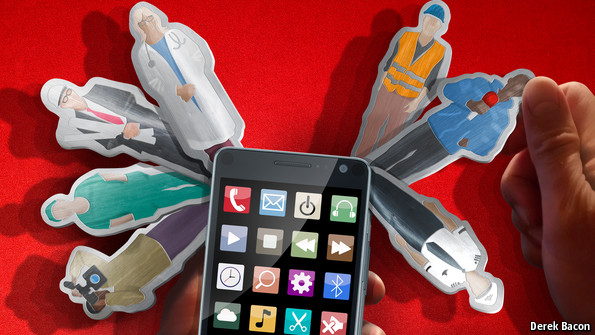
Excerpt:
HANDY is creating a big business out of small jobs. The company finds its customers self-employed home-helps available in the right place and at the right time. All the householder needs is a credit card and a phone equipped with Handy’s app, and everything from spring cleaning to flat-pack-furniture assembly gets taken care of by “service pros” who earn an average of $18 an hour.
…
Handy is one of a large number of startups built around systems which match jobs with independent contractors on the fly, and thus supply labour and services on demand.
…
The obvious inspiration for all this is Uber, a car service which was founded in San Francisco in 2009 and which already operates in 53 countries; insiders say it will have sales of more than $1 billion in 2014.
…
This boom marks a striking new stage in a deeper transformation. Using the now ubiquitous platform of the smartphone to deliver labour and services in a variety of new ways will challenge many of the fundamental assumptions of 20th-century capitalism, from the nature of the firm to the structure of careers.
…
The on-demand economy will inevitably exacerbate the trend towards enforced self-reliance that has been gathering pace since the 1970s. Workers who want to progress will have to keep their formal skills up to date, rather than relying on the firm to train them (or to push them up the ladder regardless). This means accepting challenging assignments or, if they are locked in a more routine job, taking responsibility for educating themselves. They will also have to learn how to drum up new business and make decisions between spending and investment.
Also see:
Professional Millennials and super-powered smartphones are changing the working world — from medium.com and Liquid Talent
Excerpt (emphasis DSC):
This is the year when modern technology squarely intersects with the economy and the workforce. This is the the year that marks a noted change in how we work as individuals, and as a collective. This is the year of the Millennial Generation takeover in our professional world. This is the year that marks the beginning of the Independent Workforce Revolution.
Why?
Two reasons:
1) Millennials take over
Millennials are the largest generation at 82 million strong. They do not have the same priorities as past generations and their professional incentives are quickly changing. They care less about maximizing profit, finding a secure job and taking 2.5 weeks of vacay. In fact, 54% of Millennials assert that they want to start a company one day, or already have. This generation is now 50% of the workforce, and will be 75% of the workforce by 2020. These percentages may seem staggering but with 10,000 Baby Boomers retiring everyday (every single day!) we can see this tectonic shift happening before our very eyes.
2) Mobile technology
We have our economies in our pocket. We can work anytime from anywhere, and source professional opportunities with a simple swipe. The proliferation of mobile productivity apps (ie Slack), globalized workforce platforms (ie eLance) and professional networks (ie LinkedIn) show the power and growth in professional, mobile technologies.
From DSC:
I’ve said it before and I’ll say it again to those of us working in K-12 and in higher education:
We need to be sure that we’re preparing our students to know how to run their own businesses. They need to know how to survive and thrive as freelancers — because chances are they will be freelancing at various points in their career. Our curricula should already be in the process of being updated to address these critical skills. More courses on entrepreneurship for example; also some basic accounting courses as well as coursework involving programming, brainstorming, marketing, and how to use various technologies to collaborate, stay organized, and manage one’s time.
The above items also stress the need for lifelong, accessible/affordable learning; and for constant adaptation and for reinventing oneself in order to remain marketable in the workplace.
Addendum on 2/18/15:
New tech companies say freelancing is the future of work. But there’s a downside for workers. — from washingtonpost.com by Lydia DePillis
More companies are switching their workforce to freelance. Policy needs to catch up.
Excerpt:
If the nation’s way of regulating work revolves around a relationship between an employee and employer, what happens when that relationship no longer exists?
Top 10 IT Issues, 2015: Inflection Point — from educause.edu by Susan Grajek and the 2014–2015 EDUCAUSE IT Issues Panel
EDUCAUSE presents the top 10 IT issues facing higher education institutions this year. What is new about 2015? Nothing has changed. And everything has changed. Information technology has reached an inflection point. Visit the EDUCAUSE top 10 IT issues web page for additional resources.
Excerpt (emphasis DSC):
Change continues to characterize the EDUCAUSE Top 10 IT Issues in 2015. The pace of change seems not to be slowing but, rather, is increasing and is happening on many fronts. There is reason to believe that higher education information technology has reached an inflection point—the point at which the trends that have dominated thought leadership and have motivated early adopters are now cascading into the mainstream. This inflection point is the biggest of three themes of change characterizing the 2015 EDUCAUSE Top 10 IT Issues.. A second dimension of change is the shifting focus of IT leaders and professionals from technical problems to business problems, along with the ensuing interdependence between the IT organization and business units. Underlying all this strategic change, the day-to-day work of the IT organization goes on. But change dominates even the day-to-day, where challenges are in some ways more complex than ever. This “new normal” is the third theme of change.
Andy Grove, Intel’s former CEO, described a strategic inflection point as “that which causes you to make a fundamental change in business strategy.”
From DSC:
We continue to see more articles and innovations that involve the Internet of Things (IoT) or the Internet of Everything (IoE). This trend has made me reflect upon what I think will be a future, required subset of needed expertise within the fields of Instructional Design, User Experience Design, User Interface Design, Product Development, Programming, Human Computer Interaction (HCI), and likely other fields such as Artificial Intelligence (AI), Augmented Reality (AR), and Virtual Reality(VR) as well.
And that is, we will need people who can craft learning experiences from the presence of beacons/sensors and that integrate such concepts as found in “If This Then That” (ifttt.com) whereby one is putting the Internet and cloud/mobile-based applications to work for you. Certainly, those involved in retail are already busy working on these types of projects. But those of us involved with learning, human computer interaction (HCI), and interface design need to get involved as well.
For example, this potential scenario of a K-12 field trip might be fodder for such a learning experience.
So for those individuals who are involved with the aforementioned disciplines…we need to pulse check what new affordances are coming from the rollout and further development of the IoT/IoE.
![]()
A potential scenario
A teacher takes a group of students on a field trip to their city’s recycling center.
The city has installed sensors/beacons next to their bins. They’ve also made Wi-Fi available (but only during normal hours of operation).
Upon arriving, the city’s beacons sense that mobile devices are in its proximity — including one that’s been pre-registered as a K-12 teacher — and thus take the following steps:
- A request for permission to display content is received by each mobile device
- If approved, a video of the city’s mayor is sent to each of the students’ mobile devices, explaining what the city is trying to achieve with their recycling operations
- This video is followed up with a graphic that relays how many tons of recycling are processed each week/month/year — as well as other relevant information
- After that, a brief quiz hits the students’ devices, asking them a series of questions about what was hopefully learned from the trip
- Upon submission of the quiz, the National Audubon Society has arranged with the city to transmit gift certificates worth $5.00 to each device — with an option to accept the certificate or not — and sends an interesting item to the devices from one of their sites
Meanwhile, upon returning to school:
- Another quiz is sent to each student’s device, using the concept of spaced practice/repetition to again assess whether the learning objectives were reached re: that days’ field trip
- Once the student clicks on the submit button for the quiz:
- their score is registered in the system and an answer key appears
- simultaneously, a notification is sent to the child’s parent/guardian that says that Billy has completed the field trip to XYZ recycling center, and encouraging the parent/guardian to ask Billy some open ended questions (in fact, 2-3 are provided to help with the conversation later on). That email could also let the parents know when the center is open and if they have any special programs going on (like Christmas tree disposal and recycling for Christmas tree lights)
Excerpts:
Some notes:
- Google is now bigger than all newspapers, magazines and dwarfs big media
- YouTube reaches more 18-34 year olds than any cable network
- YouTube is closing in on broadcast-network revenue
- TV now has to share attention with digital
- TV still massive, digital video still a blip
- Basically, Google is swallowing the world…
11 things we just learned about how the Apple Watch works — from theverge.com by Ross Miller

Excerpt:
As of [11/18/14] , developers can now make apps for Apple Watch. Well, they’re not separate apps so much as they are extensions of pre-existing iPhone apps, and there isn’t a lot of flexibility in the WatchKit toolset — but it looks like that’ll change next year.









